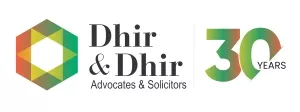- within Finance and Banking topic(s)
- in United States
- with readers working within the Law Firm industries
- within Finance and Banking topic(s)
- in United States
- within Finance and Banking, Antitrust/Competition Law and Privacy topic(s)
- with readers working within the Retail & Leisure and Law Firm industries
On June 19, 2025, the Reserve Bank of India issued a comprehensive framework as "RESERVE BANK OF INDIA (PROJECT FINANCE) DIRECTIONS, 2025" ("Directions") for financing the projects in infrastructure and non-infrastructure (including commercial real estate & commercial real estate residential housing) sectors by Regulated Entities ("REs"). These Directions shall become effective on and from October 01, 2025 ("Effective Date").
Need for Directions
- The project loans play a pivotal role in shaping India's infrastructure growth; however, certain external factors like delay in achieving commercial operation date, land acquisition issue or regulatory compliance challenges, may jeopardize the project timelines, despite the borrower's best efforts.
- In addition to the above, the panoramic framework of Prudential Framework for Resolution of Stressed Assets issued on June 7, 2019 ("Prudential Framework"), excluded the restructuring of loans provided for projects under implementation on account of change in date of commencement of commercial operations (COD), from its ambit.
Therefore, it had become necessary to have a regulatory structure for early recognition of risk and resolution of stress in project finance exposures.
The salient features of the Directions are laid down as follows:
- Applicability of the Directions
-
- ➢ Projects with financial closure scheduled or anticipated on or after Effective Date; However, on or after the Effective Date, any change in the material terms and conditions of loan agreement and/or formulation of resolution plan for a fresh Credit Event (defined hereinbelow) under the existing projects (i.e projects with financial closure already completed before the Effective Date) shall be governed by these Directions.
- ➢ Exposure where:
-
- At least 51% repayment is from the cash flows of the project;
- All lenders are to have a common agreement with the borrower. The said common agreement may have different terms and conditions for the respective lenders, which shall have been accepted by other lenders and the borrower. However, the Date of Commencement of Commercial Operations ("DCCO") needs to be the same for all the lenders.
- Phases of the project
It is broadly divided into 3 phases: -
- ➢ Design Phase: starting with the conceptualization of the project till the achievement of financial closure.
- ➢ Construction Phase: from the financial closure till the day preceding the actual commercial operation date ("COD").
- ➢ Operation Phase: it begins from the date of actual COD and ends with the complete repayment of the loan
- Credit Event
The definition of Credit Event under the Directions encompasses a broader scope than mere payment default, incorporating various factors which may have impact on the credit risk profile of the borrower or the project's financial health. These additional scenarios interalia includes: -
- ➢ need or request for extending the original DCCO/extended DCCO;
- ➢ expiry of original DCCO/extended DCCO;
- ➢ requirement of infusion of additional funds; or
- ➢ the project is faced with financial difficulty as per the Prudential Framework. This particular scenario shall be governed by both the frameworks i.e the Prudential Framework and these Directions.
- Prudential requirements for lenders
-
- ➢ Condition
Precedents
The Directions mandate that lenders adhere to and ensure specific conditions precedent to sanctioning and disbursing the loans, thereby promoting prudent lending practices and mitigating potential risks. - Sanction-related:
-
- Lender to ensure that financial closure of the project has been achieved;
- Original DCCO is specifically identified and documented before disbursement;
- The loan agreement shall mention the specific disbursement schedule vis-à-vis the stage of completion of the project;
- The post-DCCO repayment schedule has been realistically designed to factor in the initial cash flows.
- Provided that the original or revised repayment tenor, including the moratorium period, if any, will not exceed 85% of the economic life of a project.
- All project lenders are required to maintain a uniform original/extended/actual DCCO (as the case may be).
- Minimum Exposure Threshold: each individual lender shall have a minimum exposure of:
-
- At least 10%: where the total exposure of the project is INR. 1,500 crores;
- 5%: where the total exposure of the project is more than INR. 1,500 crores.
- The said limits are applicable to the under-construction projects and the lenders shall be free to acquire or sell their exposure after the achievement of the actual DCCO of the project.
- Clearances/approvals: all the requisite clearances or approvals required for implementing/constructing the project shall be in place before the financial closure. However, approvals/clearances that are contingent upon achievement of certain milestones in terms of project completion would be deemed to be applicable only when such milestones are achieved.
- Disbursement-related:
-
- Availability of land: As a pre-requisite for loan release, the lender would require to ensure that the borrower has sufficient land or right of way for the project (50% for infrastructure project under Public-Private Partnership ("PPP") model, 75% for all other projects i.e non-PPP infrastructure projects and non-infrastructure projects including Commercial Real Estate (CRE) and Commercial Real Estate Residential Housing (CRE-RH) projects and the discretion of lender shall be applicable for transmission line projects).
- Disbursement under the infrastructure project under the PPP model to be made only after the declaration of the appointed date or equivalent date. However, in cases where non-fund-based credit facilities may be mandated by the concession-granting authority as a pre-requisite for declaration of the appointed date, a lender may sanction such credit facilities, in adherence with the extant regulatory instructions on non-fund-based facilities.
- Requirement of Techno-Economic Viability (TEV) study: In respect of the exposures under the infrastructure project under PPP model, the original DCCO documented in the financial closure document may be modified to reflect any change in the appointed date by the concession granting authority prior to disbursement of funds by way of a supplementary agreement between a lender and the borrower subject to reassessment of project viability and obtention of sanction from appropriate authorities. A Techno-Economic Viability (TEV) study shall be required for this purpose for all projects where the aggregate exposure of all lenders is ₹100 crores or more.
- Proportionate disbursement: disbursement to be made proportionate to the stage of completion of the project, infusion of equity/other sources and receipt of remaining applicable clearances/approvals for the project
- ➢ Database and
reporting
The lenders shall be required to implement a necessary system within 3 (three) months from the effective date to maintain the project finance database in electronic form, including details pertaining to the borrower, project, change in DCCO, Credit Event other than deferment of original DCCO, and external rating. Any change in the said parameters shall be updated by the lenders within 15 (fifteen) days from the date of such change. - ➢ Prudential norms for Resolution
-
- Permitted DCCO deferment: the permitted extension of DCCO under the Directions are capped at 3 years for infrastructure projects and upto 2 years for non-infrastructure projects (including CRE and CRE-RH) along with consequential shift in repayment schedule, which shall not trigger any downgrade of loan account and it shall continue to be classified as 'standard'.
- Cost Overrun: As a part of the resolution plan, a lender may infuse the cost overrun facility associated with permitted DCCO deferment in compliance with paragraph 26(a) above, and classify the account as 'standard', as under:
-
- Cost overrun up to a maximum of 10% of the original project cost, in addition to IDC.
- Cost overrun is financed through the Standby Credit Facility ("SBCF") specifically sanctioned by the lender at the time of financial closure.
- For infrastructure projects, in cases where SBCF was not sanctioned at the time of financial closure, or was sanctioned but not renewed subsequently, such additional funding shall be priced at a premium to what would have been applicable on a pre-sanctioned SBCF. Lenders shall ensure that the loan-contracts ab initio specify the additional risk premium to be charged on such SBCF, which may be revised upwards based on actual risk assessment at the time of sanction of such facilities.
- The financial parameters like debt-to-equity ratio, external credit rating (if any), etc. remain unchanged or are enhanced in favour of the lender post such cost overrun funding.
- For the purpose of above: SBCF is a contingent credit line sanctioned for the project at the time of financial closure to fund any cost overrun during the construction phase of the project.
- Change in Scope and Size – A project finance account where DCCO extension is necessitated by an increase in the project outlay on account of an increase in the scope and size of the project, may be classified as 'Standard', subject to complying with the following conditions:
-
- The rise in project cost, excluding any cost-overrun in respect of the original project, is 25% or more of the original outlay as the case may be;
- A lender reassesses the viability of the project before approving the enhancement of scope and fixing a fresh DCCO.
- On re-rating (if already rated), the new external credit rating is not below the previous external credit rating by more than one notch. If the project debt was unrated at the time of an increase in scope or size, then it should be externally rated investment grade upon such an increase in scope or size in case of projects where the aggregate exposure of all lenders is equal to or greater than ₹100 crores.
- The standard asset classification benefit on account of 'change in scope' shall be allowed only once during the lifetime of the project.
- Review Period: within 30 (thirty) days from the occurrence of any Credit Event, the lender to review the borrower's account and its conduct under the said review period shall be guided by the Prudential Framework.
- Timeframe for implementation of resolution plan: a period of 180 (one hundred eighty) days from the end of the Review Period is prescribed to implement the resolution plan, which is similar to the timelines provided in the Prudential Framework. It is also clarified in the Directions that failure to implement the resolution plan in accordance with conditions mentioned hereinabove (point 26 of the Directions) and said timelines (point 27 of the Directions), the loan account shall be immediately downgraded to a non-performing asset.
- ➢ Provisioning
Guidelines
The Directions mandate a standardized provisioning framework for all lenders, ensuring consistency in provisioning norms and enhancing financial stability. -
- Standard Assets: During the construction phase, a provision of 1.00% to be maintained for infrastructure projects and CRE-RH, while a provision of 1.25% is required to be maintained for CRE. The said rates of provisions are reduced during the operational phase of the project; therefore, a provision of 0.40% is for the infrastructure project, 0.75% for CRE-RH and 1% is mandated for CRE.
- DCCO Deferred Standard Assets: Additional specific provision of 0.375% for infrastructure project loans and 0.5625% for non-infrastructure project loans (including CRE and CRE-RH), for each quarter of deferment, over and above the applicable standard asset provision specified at the paragraph above, is required to be maintained. However, this additional requirement shall be annulled upon commencement of commercial operation of the project.
- Existing Projects: the provisioning of the existing project (i.e. projects with financial closure attained as on the Effective Date) shall be governed by the Prudential Norms, however, in case of resolution of a fresh Credit Event and/or change in material terms and conditions of loan agreement of such existing project pursuant to the Effective Date, then the provisioning of such assets shall be implied in terms of these Directions.
- Non-Performing Assets: Provisioning for project loans classified, as NPA shall be as per extant instructions contained in Master Circular - Prudential norms on Income Recognition, Asset Classification and Provisioning pertaining to Advances dated April 01, 2025, as updated from time to time or the relevant instructions as applicable to specific category of lenders.
- ➢ Condition
Precedents
Conclusion
The Central Bank, under these Directions, has established standardized guidelines for credit assessment, documentation and provisioning, with a motive to enhance the overall integrity of the project financing in India.
These Directions impose strict compliance requirements on lenders, necessitating adherence to specified conditions prior to loan sanctioning and disbursement, with the objective of maintaining sound lending standards and minimizing credit risks. The land sufficiency requirement presents a nuanced challenge for both lenders and borrowers, striking a delicate balance between risk management and operational efficiency. For lenders, this requirement poses hurdles such as, potential delays in financial closure and increased monitoring requirement however, it also offers benefits including reduced risk and increased project stability, as borrowers have a significant stake in the project before disbursement of loan, thereby decreasing the likelihood of project delays or abandonment due to land acquisition issues. However, for borrowers, this requirement can pose significant hurdles, including delays in financial closure and disbursement of funds, which can impact project timelines. Therefore, the borrowers must carefully plan and manage their land acquisition strategies to meet the requirements of availing funds.
As per the Directions, the repayment schedule shall not exceed 85% of the project's life, a practice already commonly adopted in the industry to mitigate the risk. While this approach is not new, it's essential to highlight the implications and advantages of this requirement. Compared to a repayment schedule spanning the entire project life, this requirement results in higher installment amounts during the repayment period. Consequently, a larger portion of project cash flows is utilized for debt servicing, potentially reducing the amount available for distributions to promoters during this period. However, the 15% tail period provides a buffer for lenders, reducing default risk.
The imposition of minimum exposure limit (as applicable till actual DCCO) for transfer and novate the loans aims to ensure an active and significant involvement of each lender in the project.
The lenders shall be allowed to grant the cost overrun funding up to a maximum of 10% of the original project cost, in addition to IDC, irrespective of whether financed through an SBCF at the time of financial closure or not. The lender reserves the right to charge a premium on cost overrun funding in case it was neither financed through an SBCF at financial closure or nor was it renewed. This higher charge is to account for the increased risk the lender takes on by providing these additional funds under less favourable conditions.
Projects having achieved financial closure before the Effective Date are exempted from the purview of these Directions; however, in case of deferment of DCCO and/or occurrence of any other fresh Credit Event, subsequently to the Effective Date, shall drag such ongoing projects under the umbrella of these Directions including the provisioning norms.
These Directions underscore the critical need for lenders to exercise heightened diligence both before and after the loan disbursement, ensuring thorough due diligence and ongoing monitoring to mitigate risks. Concurrently, borrowers are also encouraged to engage in meticulous preplanning, including comprehensive project feasibility assessments and robust risk management strategies. This dual approach aims to foster a more sustainable and responsible lending environment, ultimately contributing to the stability and integrity of project financing in India.
The content of this article is intended to provide a general guide to the subject matter. Specialist advice should be sought about your specific circumstances.



